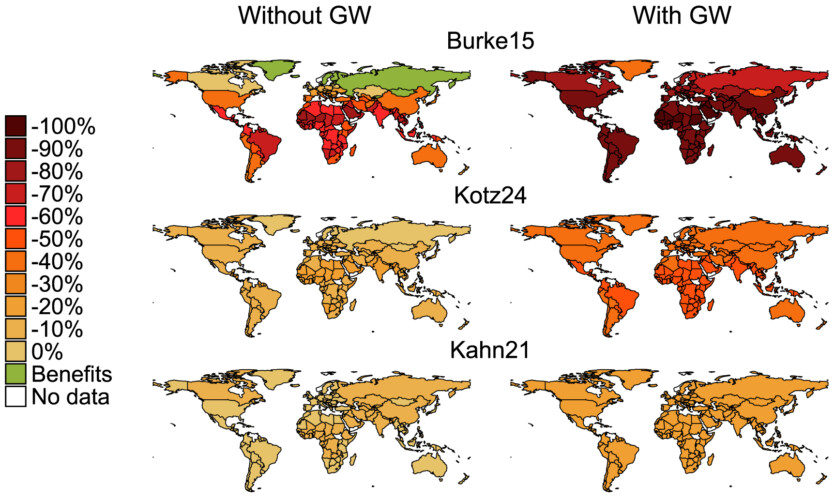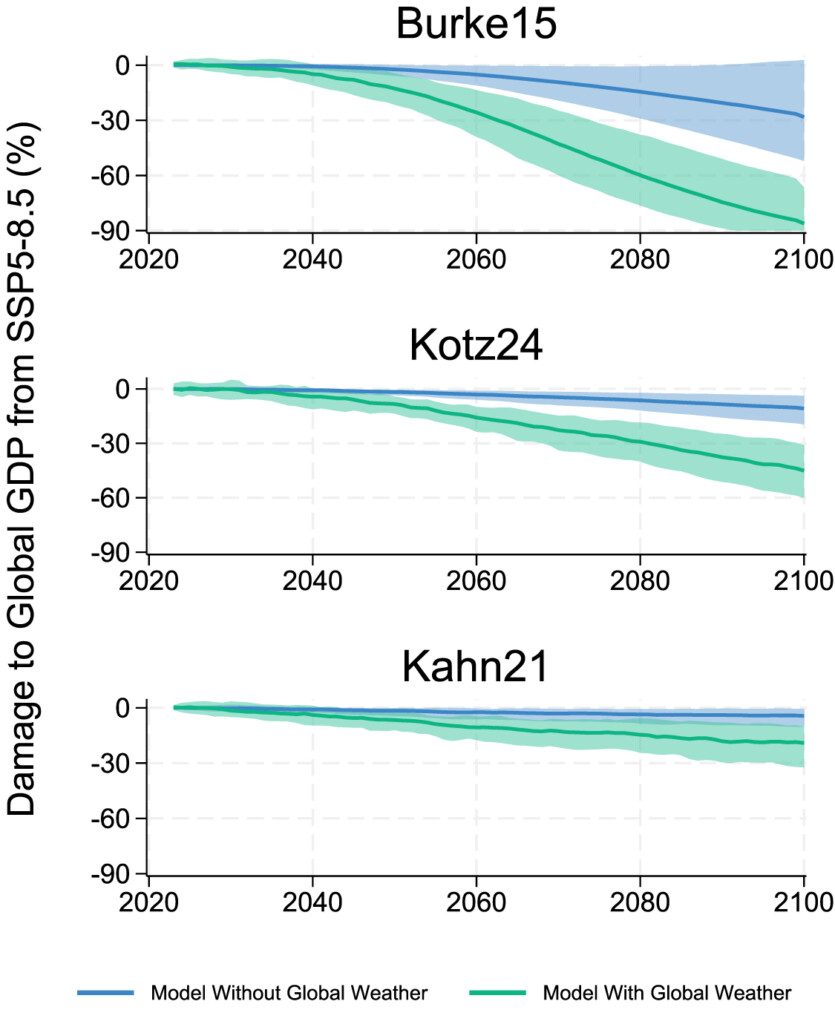
Researchers from the University of New South In Sydney, it was estimated that global warming could bring down the global economy by 40% this century.
According to the study’s author, Senior Lecturer in Economics at the Institute of Climate Risk and Response at the University of Sydney, Timothy Neal, the damage from global warming to the global economy has probably been underestimated. Currently, forecasts of the impact of climate change on global GDP include scenarios with mild or moderate consequences, which has led to a slowdown in the reduction of harmful greenhouse gas emissions.
However, as Timothy Neal emphasizes, all existing models have a significant drawback, as they take into account the effects on the economy of individual countries only from weather conditions in those countries. Any impact of climate change in other countries, for example, how large-scale floods in one country can affect food supplies in another, are not taken into account.
In a new study, Australian scientists tried to consider and take this into account. They identify the most obvious damage from extreme weather. Among other things, droughts will provoke crop failuresand storms and floods can cause widespread destruction and disrupt the supply of goods.

Recent studies have shown that extreme heat waves are causing inflation and rising food prices around the world. The rise in temperature causes a drop in human labor productivity. The health of people in areas with unstable and extreme climatic conditions is deteriorating, and diseases are spreading. These factors cause mass migration, armed and economic conflicts.
Most previous studies predict that even with an extreme temperature increase of 4 C°, the impact on the global economy will be moderate, somewhere around 7-23%. However, these models are mostly based on the effects of past weather disasters, limited to local and regional scales. For example, in the past, South American countries often suffered from severe droughts, but were able to compensate for low harvests by supplying products from other countries where weather conditions remained favorable.
Meanwhile, further increased climate disasters will occur in all regions of the world and in many countries simultaneously. This has the potential to disrupt food supply chains, pose an unprecedented threat to global trade, and limit the ability of some countries to provide assistance to others.
In their study, Australian scientists adjusted three leading models of the impact of climate change on the global economy and averaged their results. They focused on global GDP per capita — or on the volume of world production divided by the population.

Based on the results of their calculations, further increase in temperature of 3 C° on the planet will increase losses for the global economy from 11% to 40%. Previous models predicted that the economies of countries in the northern part of the world, in particular Russia and the Nordic countries, would benefit from rising temperatures. The researchers argue that the impact of global warming on the global economy will be so severe that all countries will be affected.
Reducing harmful emissions the climate change policy leads to costs in the short term, which must be balanced against the long-term benefits of preventing the dangerous effects of climate change. According to one of the latest economic modeling studies, the balance can be achieved by reducing emissions to prevent the planet from warming by more than 2.7 C° But this is much higher than the goals of the Paris Climate Agreement and the limits of global warming recommended by climate scientists. It is also based on false assumptions
In their study, Australian scientists argue that the optimal level of warming should be 1.7 C° to balance the costs of reducing emissions and the benefits of preventing further negative effects of climate change.
Humans are to blame for sudden sharp changes in rainfall and droughts, — study
The results of the study were published in the journal The Conversation
Source: ScienceAlert

Spelling error report
The following text will be sent to our editors: